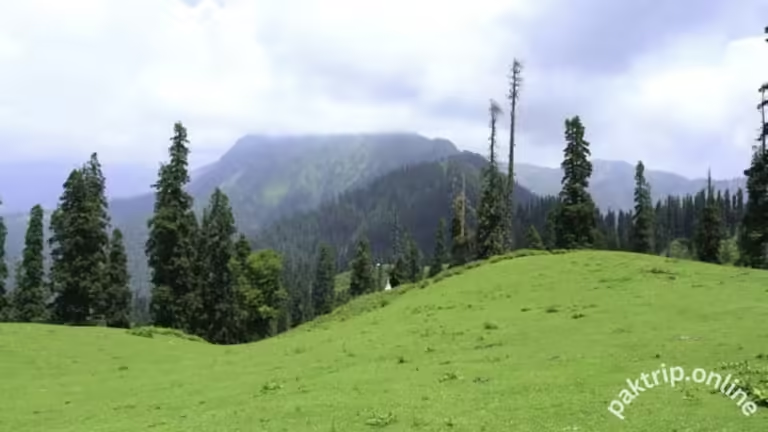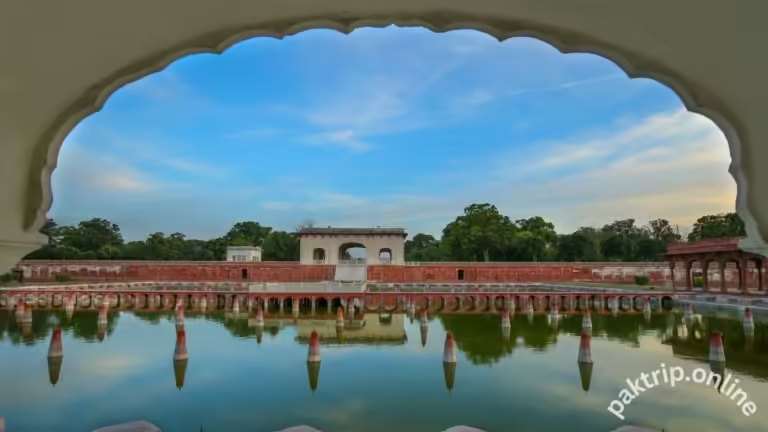Noor Mahal Bahawalpur: The Jewel of Pakistan’s Heritage
Noor Mahal Bahawalpur is one of Pakistan’s most splendid and historically rich palaces, encapsulating the architectural grandeur of the Nawabs of Bahawalpur. This architectural gem, often called the “City of Palaces,” is a significant attraction in the city of Bahawalpur, drawing tourists, historians, and architecture enthusiasts. Rich in heritage and cultural significance, Noor Mahal stands as a testament to the royal legacy of the Abbasi family, the ruling dynasty of Bahawalpur.
In this article, we’ll dive deep into the history, architectural wonders, and cultural importance of Noor Mahal, highlighting why it’s a must-visit destination for anyone exploring the beautiful landmarks of Pakistan.
The Historical Legacy of Noor Mahal Bahawalpur
Constructed between 1872 and 1875, Noor Mahal was commissioned by Nawab Sadiq Muhammad Khan IV, the ruler of Bahawalpur at that time. Nawab Sadiq desired a lavish residence for his family, intending Noor Mahal to reflect the royal status and grandeur of Bahawalpur’s Abbasi dynasty. Initially, it was meant as a private palace for his wife, but legend has it that upon learning that the palace lay close to a cemetery, she hesitated to live there. As a result, Noor Mahal primarily became a venue for state affairs, gatherings, and royal ceremonies.
Noor Mahal is now recognized as a national heritage site of Pakistan. It serves as a testament to Bahawalpur’s illustrious history, representing a blend of culture, art, and historical richness that makes it a top tourist attraction today.
Architectural Brilliance: The Design of Noor Mahal
The architectural magnificence of Noor Mahal is truly captivating. Built with a mix of Italian and Islamic influences, the palace spans over 44,600 square feet and boasts five grand domes, numerous archways, expansive corridors, and lush green gardens that make it one of the finest palaces in Pakistan. Noor Mahal’s iconic domes and European-style balconies reveal Italian Renaissance touches, while the elegant Islamic arches and intricate wooden carvings reflect the local architectural style.
Notably, the construction used innovative materials such as local clay and lime rather than iron or steel, giving the structure durability and an organic, unique texture. The palace’s central hall, Darbar Hall, was designed to hold meetings and state ceremonies. This hall features a beautifully vaulted ceiling with gold-tinged decorations, a testament to the opulence of the Abbasi dynasty.
A Glimpse Inside Noor Mahal
Upon entering Noor Mahal Bahawalpur, visitors are greeted by a grand hallway lined with antique furniture, exquisite chandeliers, and traditional artwork. Much of the palace’s original furniture and fixtures, such as carved doors, large windows, and imported teak furniture, are still in place. The palace’s renowned grand piano, imported from Germany, remains a centerpiece, representing the Nawab’s love for music and the arts.
The Main Lobby and Darbar Hall
The palace’s main lobby and Darbar Hall are some of its most stunning areas. The walls are adorned with portraits of past Nawabs and noble figures, reflecting the royal lineage and legacy of the Abbasi dynasty. In Darbar Hall, the ceiling stands out with its intricate detailing, creating an impressive sight. This grand room, once used for royal meetings, coronations, and festive celebrations, features galleries lined with decorative pillars and gold-painted elements, adding to the room’s magnificence.
The Bahawal Gallery and Saadat Gallery
Two significant galleries in Noor Mahal are the Bahawal Gallery and the Saadat Gallery. The Bahawal Gallery is dedicated to the city’s heritage, featuring artifacts that represent Bahawalpur’s historical gates, including Tarawadi Gate, Farid Gate, and Ahmedpuri Gate. These gates once served as main entrances to Bahawalpur, highlighting the importance of the city as a center of trade and culture.
The Saadat Gallery pays tribute to the Nawabs of Bahawalpur, showcasing personal items, family portraits, and memorabilia of the royal family. Here, visitors can view a timeline of the Abbasi family’s rule, which shaped the cultural and political landscape of Bahawalpur. This gallery includes rare photographs and possessions that were once owned by Nawab Sadiq Muhammad Khan IV and his successors, giving visitors an intimate look at the lives of Bahawalpur’s royals.
The Ingenious Cooling System
One of the most innovative features of Noor Mahal is its sophisticated cooling system, designed to regulate the palace’s temperature during the scorching summers of Bahawalpur. The system involved two underground tunnels filled with water, which allowed cool air to circulate into the palace. This natural air conditioning system kept Noor Mahal cool and comfortable for its residents, demonstrating the architects’ resourcefulness and attention to climate-appropriate construction.
Royal Transportation: The Historic Hajj Van and Buggy
The Noor Mahal complex houses a fascinating relic: the Hajj Van, a vehicle used by Nawab Sadiq Muhammad Khan IV during his pilgrimage. This van, which could accommodate two passengers, is still in remarkable condition and showcases the Nawab’s journey. Also featured in Noor Mahal is the royal buggy, which was commonly used for short travels by the Nawab’s family around Bahawalpur. These preserved vehicles offer insight into the transportation styles of the era and the Nawab’s love for travel and exploration.
Cultural Significance and Modern-Day Tourism
Today, Noor Mahal serves as a cultural and historical landmark, attracting thousands of visitors each year. The palace is now managed by Pakistan’s Department of Archaeology and has become one of the main attractions for both domestic and international tourists interested in Pakistan’s heritage sites.
The Noor Mahal offers guided tours that lead visitors through the palace’s various rooms, halls, and galleries, providing detailed information on its historical and cultural background. These tours help to educate visitors about the Abbasi dynasty’s legacy, the architectural details of the palace, and the significance of each room and artifact within Noor Mahal.
Many cultural and social events are held in Noor Mahal’s expansive gardens and Darbar Hall, making it a lively site for exhibitions, concerts, and gatherings. These events bring the palace’s history alive, as guests experience the royal ambiance of Noor Mahal while learning about Pakistan’s cultural heritage.
Why Noor Mahal is a Must-Visit for Tourists
Noor Mahal stands out as a symbol of Pakistan’s architectural brilliance and cultural depth. Here’s why every traveler should consider visiting Noor Mahal:
Historical Significance: As a royal residence, Noor Mahal offers a glimpse into the life and rule of Bahawalpur’s Nawabs, making it an invaluable piece of Pakistan’s history.
Architectural Beauty: With its Italian and Islamic architectural influences, the palace is a treat for art and architecture enthusiasts. Its domes, archways, and intricate woodwork showcase a masterful blend of styles.
Unique Artifacts: The palace houses numerous artifacts, including royal memorabilia, antique furniture, and the original printing press of Bahawalpur, which once printed state documents.
Ingenious Design: The natural cooling system and carefully placed skylights are a testament to the innovative engineering used in Noor Mahal’s construction, making it a marvel of sustainable architecture.
Tourist-Friendly Facilities: The palace is open to the public with facilities for guided tours, photography, and cultural events, offering an enriching experience for visitors of all ages.
Local and International Recognition
Noor Mahal is a registered heritage site, recognized not only by Pakistan’s Department of Archaeology but also celebrated internationally for its cultural and architectural value. It has been featured in documentaries, travel shows, and articles that highlight Pakistan’s rich cultural landscape, bringing global awareness to Bahawalpur’s historical treasures. The palace continues to attract historians, architects, and cultural enthusiasts from around the world, securing its place as a national treasure and a symbol of Pakistan’s royal heritage.
Conclusion
Noor Mahal is more than a palace, it’s a journey through the history, culture, and architecture of the Abbasi dynasty and the city of Bahawalpur. Every corner of the palace tells a story, from the grand halls to the royal artifacts, from the cooling system to the Hajj Van, adding layers to its historic charm. For those passionate about exploring Pakistan’s heritage, the Noor Mahal is a destination that promises an unforgettable experience of royal luxury, architectural beauty, and cultural depth.
Whether you’re a history enthusiast, an architecture lover, or simply a curious traveler, Noor Mahal offers a unique and engaging experience. Its timeless beauty, historical significance, and cultural importance make it one of Pakistan’s most treasured sites, worth every moment spent exploring its grand halls and elegant corridors.







